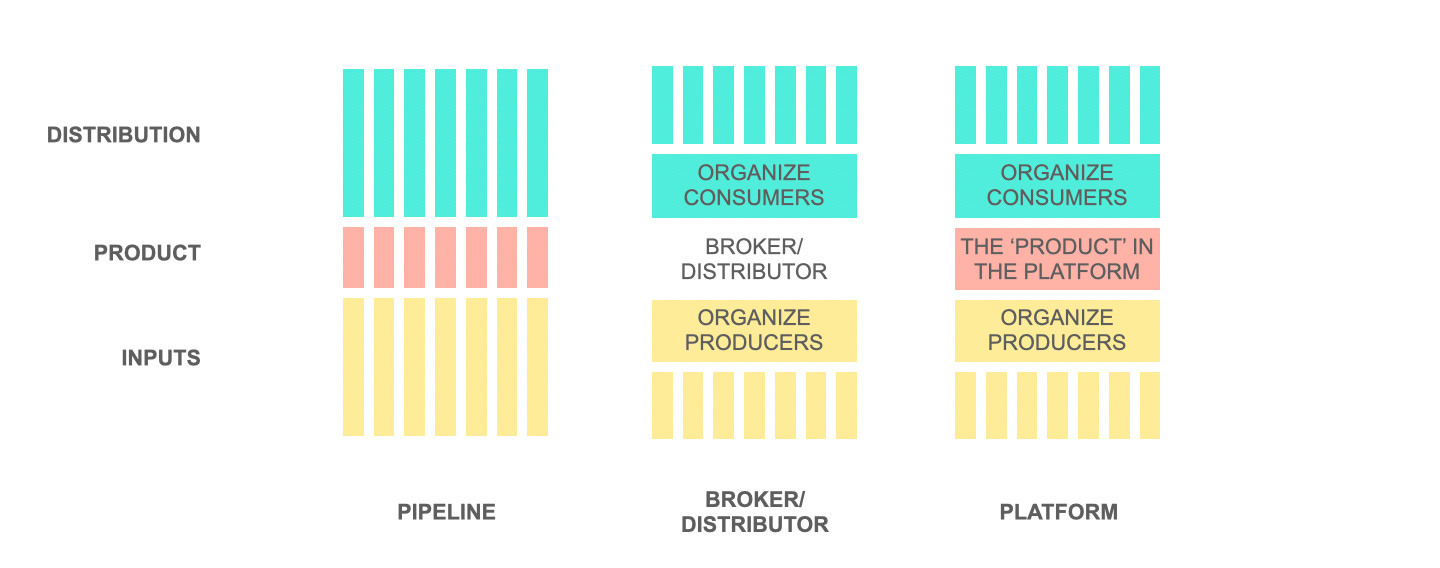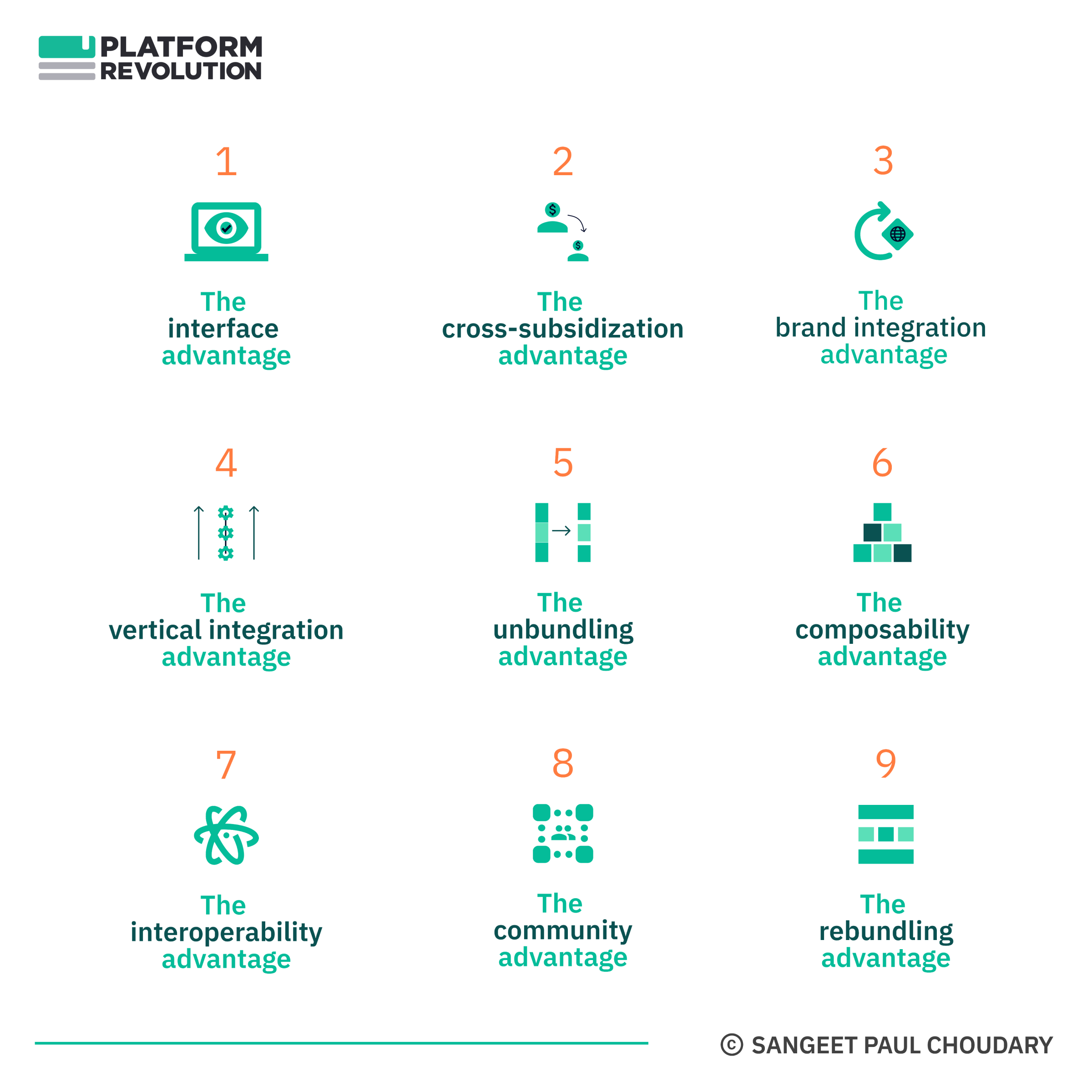Strategy
The secret to scaling social networks and local marketplaces
Strategies for Sustainable Growth
We often associate social networks with hyper-growth, a perception largely fostered by growth infographics of Facebook, Twitter and Pinterest that get shared all around. But not all social networks scale that easily.
There are three patterns that I often see across the growth of most social networks (and most platform business models, for that matter). I’ve talked at length about this in earlier posts, but here’s a quick recap:
First, most social networks start with a chicken and egg problem at launch. Since users create value, there is no value when there are no users on board, which in turn makes the social network unattractive for the first few users to sign up. You cannot just growth-hack your way out of chicken and egg problems. They are solved through careful incentive design and seeding of initial value. So chicken and egg problems are immensely difficult to overcome.
Secondly, social networks scale when users bring in other users. Without organic virality, it is very difficult for social networks to scale.
Finally, most networked startups start out by targeting a specific market. They do not start out by targeting the whole world. Facebook started with Harvard, Groupon started with Chicago and Quora started with the tech community in the Valley.
The Unscalable Social Network
While Facebook, Twitter and Pinterest have great growth curves to show off, many social networks fail to scale at that rate. There are certain characteristics that structurally prevent such networks from scaling at that rate, irrespective of the quality of execution. Typically, such networks have one or more of the following characteristics:
1) They need to solve the chicken and egg problem multiple times, not just once
2) There is a cap to organic virality i.e. users cannot bring in more than a certain number of other users
3) There is very low overlap between markets and hence, a low probability of easily expanding from one to the other
These three characteristics create conditions that are unfavorable to scalability.
These three characteristics usually occur when a network tends to get concentrated into clusters of user nodes.
Some networks actually allow cluster formation by design. Let’s look at a few examples.
Path – The anti-viral network
Path is a network that mirrors very strong offline family ties. Every family constitutes a network cluster, and Path is made of many such network clusters. Let’s define a network cluster as a subset of the network where users tend to cluster together because of a shared characteristic. In the case of path, it’s family ties and every user is part of a particular network cluster. In contrast, users on Facebook are part of multiple such network clusters. Path, being about family, has every user as part of only those network cluster(s) that represent her family.
If one were to visualize these networks, Path would likely have multiple network clusters which are unconnected to each other, since these would be different family groups with no common relationship. Facebook, in contrast, would have links between different network clusters (say your college network and your work relationships network).
Facebook benefited from high virality because a user gets greater value out of the network by getting all her friends on board. In contrast, Path structurally requires users to invite only family members. The use case itself imposes a natural cap on virality.
Nextdoor – Solving thousands of chicken and egg problems
Nextdoor is another example of a social network that has multiple network clusters within. Nextdoor is a social network for the neighborhood, and each neighborhood is a network cluster. Since users are unlikely to be part of multiple neighborhoods, these network clusters aren’t connected with each other. Every neighborhood is insular and siloed.
Nextdoor faces a unique problem. Since every neighborhood is an independent network cluster, every such network needs to be seeded from scratch. Members in neighborhood A do not have a natural incentive to invite members in an unconnected neighborhood B, even though they may be friends otherwise.
Yes, some word of mouth does help to get new network clusters started, but Nextdoor has a unique problem. Network clusters in Path (i.e. the family) are so close-knit that there isn’t much of a chicken and egg problem there once you get two users from a particular family in. Nextdoor needs a larger number of active users for users in a neighborhood to find value. Hence, it faces some form of a chicken and egg problem every time it spreads to a new neighborhood. The problem is likely to become easier as it achieves created penetration in a particular city but it still does exist.
Social networks like Path or Nextdoor inherently restrict virality because of network clusters
Feel Free to Share
Download
Our Insights Pack!
- Get more insights into how companies apply platform strategies
- Get early access to implementation criteria
- Get the latest on macro trends and practical frameworks
City Networks – When spillovers don’t happen
City-specific networks and marketplaces like Uber, Yelp and OpenTable also have fairly insular network clusters. Every city is a network cluster of producers and consumers. There is some cross-usage, e.g. traveler from city A to city B may reserve a restaurant in city B. But the primary and dominant use case is within one particular network cluster.
Social networks scale when the activity in one network cluster can spill over to another network cluster. LinkedIn, for example, started out in the US but spilled over across markets as users started inviting connections in different markets. LinkedIn already had millions of users in Asia before it ever opened an office there.
This spillover is discouraged when your product fosters insular non-interacting network clusters like families, neighborhoods or cities.
While Path and Nextdoor have some potential for spillover (through word of mouth among users in the same city), city-specific platforms like Yelp, Uber or Foursquare need to start operations ground up in every new city.
eBay realized that it was a network of country-level network clusters. Buyers in one country were not too likely to buy from sellers in another country. eBay’s expansion strategy, in its early days, was simply to acquire copycats in different countries. Facebook, in contrast, never followed this strategy partly because it would have been a product and data nightmare, but also because geographical barriers do not pose a problem to the type of user-user interactions that Facebook enables. eBay had very little spillover while Facebook had loads of it.
Growth and Spillover
The networks with the fastest growth are the ones that freely allow spillover. Airbnb, unlike Uber and OpenTable, has tremendous potential for spillover. The fact that the use case is travel makes such spillover organic to the network. The host and traveler will most likely be part of different city networks. Such cross-cluster interaction allows growth to occur without having to be confined within geographical boundaries.
In contrast, Uber and OpenTable need to start operations ground-up in every city every time they want to scale geographically.
Tipping Points
This brings us to another interesting point. The growth curves of Facebook, Twitter, Airbnb and Pinterest have well-defined inflection points. Social networks with clusters may not have such well-defined tipping points because of the additional investment in starting up new clusters. They are more likely to show some step function characteristics.
Strategies for achieving spillover
So what do you do if you’re running such a business? When a platform business has isolated network clusters, there are two ways of kickstarting activity in new network clusters.
1. Cross-cluster Interactions
Can you create an interaction where a user in network cluster A needs to interact with a user in network cluster B? How often do these interactions occur? How often is such an interaction likely to bring in new users and create new networks?
Interestingly, Facebook started out by building standalone campus networks but later allowed cross-campus interaction, and subsequently opened out completely. In case of Facebook, cross-university relationships already existed offline. In case of Path or Nextdoor, some other trigger may be needed on which two families or two neighborhoods may exchange information. Whenever your platform encourages the creation of multiple network clusters, as in the examples above, creating an interaction across them creates much-needed spillover.
2. Cross-cluster Incentives
Groupon is another example of a buyer-seller network where every city is an isolated network cluster. Hence, starting new cities, again, has the same chicken and egg problem. Groupon combated this by creating national deals: a cross-network incentive that attracted consumers in cities where Groupon hadn’t yet launched. By amassing consumers through national deals, Groupon had an initial base of consumers to start with while kick-starting a new city and just needed to get the merchants and deals.
Tweetable Takeaways
1. The hockey stick isn’t universal. Not all social networks grow exponentially. Tweet
2. Social networks like Path or Nextdoor inherently restrict virality because of network clusters. Tweet
3. Groupon’s National deals helped kickstart new markets. Tweet
State of the Platform Revolution
The State of the Platform Revolution report covers the key themes in the platform economy in the aftermath of the Covid-19 pandemic.
This annual report, based on Sangeet’s international best-selling book Platform Revolution, highlights the key themes shaping the future of value creation and power structures in the platform economy.
Themes covered in this report have been presented at multiple Fortune 500 board meetings, C-level conclaves, international summits, and policy roundtables.
Subscribe to Our Newsletter













